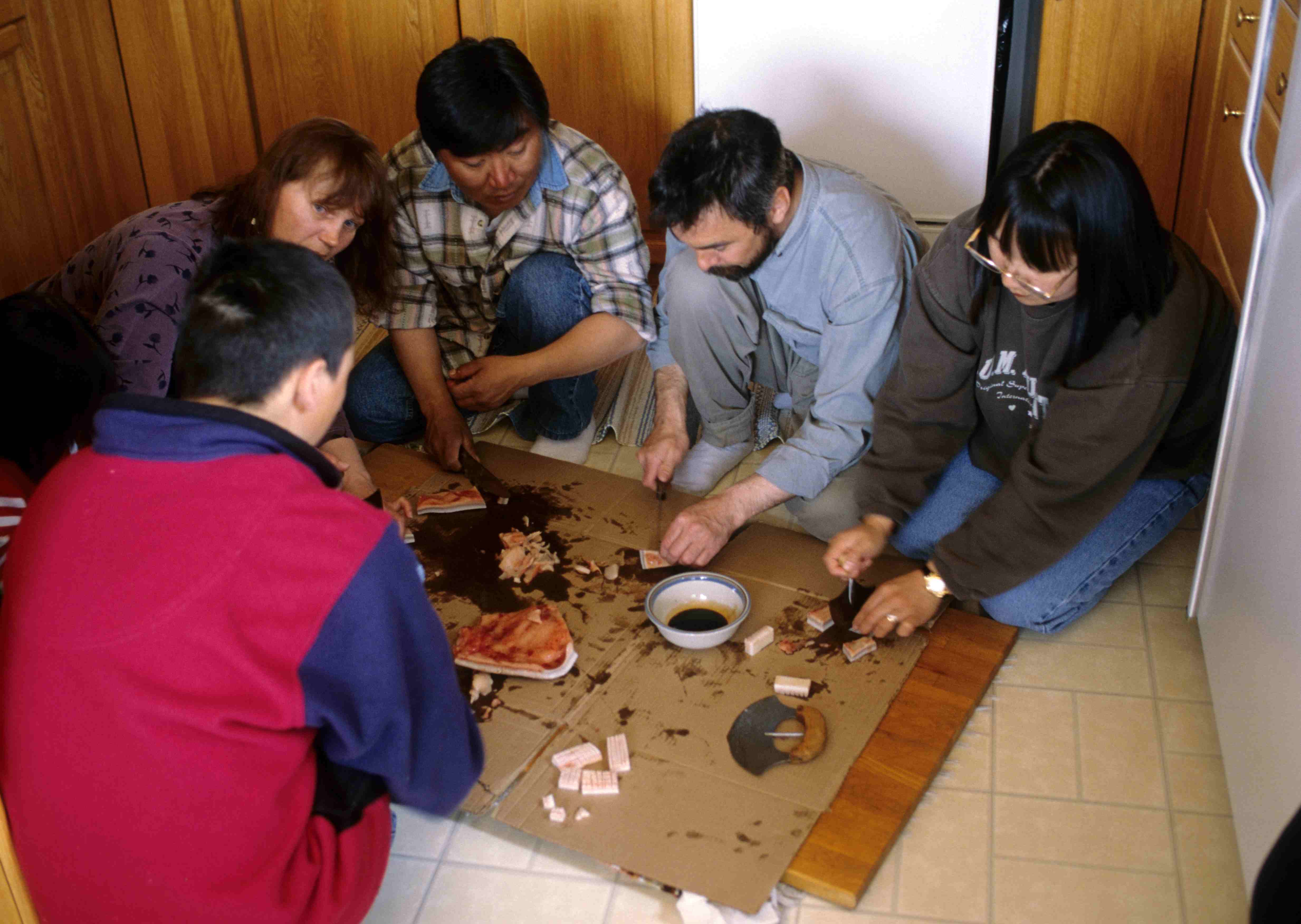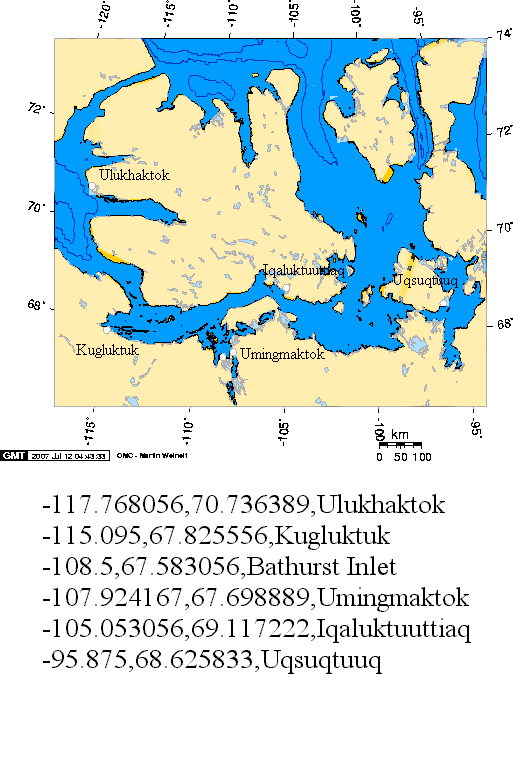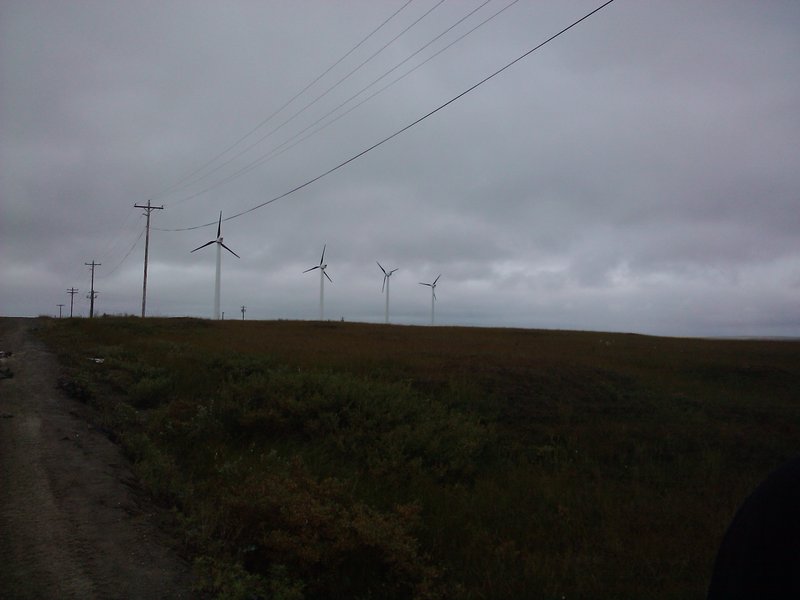|
Ulu
An ulu ( iu, ᐅᓗ, plural: ''uluit'', 'woman's knife') is an all-purpose knife traditionally used by Inuit, Iñupiat, Yupik, and Aleut women. It is utilized in applications as diverse as skinning and cleaning animals, cutting a child's hair, cutting food and, if necessary, trimming blocks of snow and ice used to build an igloo. Name In the Nunatsiavummiutut variety of Inuttitut, which is spoken in Nunatsiavut (Northern Labrador), the word is spelled , and in Tunumiit (East Greenlandic) it is or . The following chart lists both Eskimo-Aleut terms as well as two terms for the same tool in Athabaskan languages, which are an unrelated language family spoken by non-Inuit-Iñupiat-Aleut Alaska Natives. Materials Traditionally the ulu was made with a caribou antler, muskox horn or walrus ivory handle and slate cutting surface, due to the lack of metal smelting technology in the Arctic. The handle could also be carved from bone, and wood was sometimes used when it was availab ... [...More Info...] [...Related Items...] OR: [Wikipedia] [Google] [Baidu] |
Eskimo–Aleut Languages
The Eskaleut (), Eskimo–Aleut or Inuit–Yupik–Unangan languages are a language family native to the northern portions of the North American continent and a small part of northeastern Asia. Languages in the family are indigenous to parts of what are now the United States (Alaska); Canada ( Inuit Nunangat including Nunavut, Northwest Territories (principally in the Inuvialuit Settlement Region), northern Quebec ( Nunavik), and northern Labrador (Nunatsiavut); Greenland; and the Russian Far East (Chukchi Peninsula). The language family is also known as ''Eskaleutian'', ''Eskaleutic'' or ''Inuit–Yupik–Unangan''. The Eskaleut language family is divided into two branches: the Eskimoan languages and the Aleut language. The Aleut branch consists of a single language, Aleut, spoken in the Aleutian Islands and the Pribilof Islands. Aleut is divided into several dialects. The Eskimoan languages are divided into two branches: the Yupik languages, spoken in western and southwestern A ... [...More Info...] [...Related Items...] OR: [Wikipedia] [Google] [Baidu] |
Yup'ik Language
The Yup'ik or Yupiaq (sg & pl) and Yupiit or Yupiat (pl), also Central Alaskan Yup'ik, Central Yup'ik, Alaskan Yup'ik ( own name ''Yup'ik'' sg ''Yupiik'' dual ''Yupiit'' pl; russian: Юпики центральной Аляски), are an Indigenous people of western and southwestern Alaska ranging from southern Norton Sound southwards along the coast of the Bering Sea on the Yukon-Kuskokwim Delta (including living on Nelson and Nunivak Islands) and along the northern coast of Bristol Bay as far east as Nushagak Bay and the northern Alaska Peninsula at Naknek River and Egegik Bay. They are also known as Cup'ik by the Chevak Cup'ik dialect-speaking people of Chevak and Cup'ig for the Nunivak Cup'ig dialect-speaking people of Nunivak Island. Both Chevak Cup'ik and Nunivak Cup'ig people are also known as ''Cup'ik.'' [...More Info...] [...Related Items...] OR: [Wikipedia] [Google] [Baidu] |
Ulukhaktok
Ulukhaktok (Kangiryuarmiutun (Inuit language) spelling ''Ulukhaqtuuq'' () and known until 1 April 2006 as ''Holman'' or ''Holman Island'') is a small hamlet on the west coast of Victoria Island, in the Inuvik Region of the Northwest Territories, Canada. Like other small traditional communities in the territories, hunting, trapping, and fishing are major sources of income, but printmaking has taken over as the primary source of income in recent years. The two principal languages in Ulukhaktok are the Kangiryuarmiutun dialect of Inuinnaqtun, which is part of the Inuvialuktun group, and English. The village has the world's most northerly golf course. The community was covered in the Inuvialuit Final Agreement as part of their land claims and is in the Inuvialuit Settlement Region. History The first people to settle in the area were Natkusiak and his family in 1937. Two years later, the Hudson's Bay Company relocated from Walker Bay and a Roman Catholic mission was opened the ... [...More Info...] [...Related Items...] OR: [Wikipedia] [Google] [Baidu] |
Walrus Ivory
The walrus (''Odobenus rosmarus'') is a large flippered marine mammal with a discontinuous distribution about the North Pole in the Arctic Ocean and subarctic seas of the Northern Hemisphere. The walrus is the only living species in the family Odobenidae and genus ''Odobenus''. This species is subdivided into two subspecies: the Atlantic walrus (''O. r. rosmarus''), which lives in the Atlantic Ocean, and the Pacific walrus (''O. r. divergens''), which lives in the Pacific Ocean. Adult walrus are characterised by prominent tusks and whiskers, and their considerable bulk: adult males in the Pacific can weigh more than and, among pinnipeds, are exceeded in size only by the two species of elephant seals. Walruses live mostly in shallow waters above the continental shelves, spending significant amounts of their lives on the sea ice looking for benthic bivalve mollusks to eat. Walruses are relatively long-lived, social animals, and they are considered to be a "keystone species" i ... [...More Info...] [...Related Items...] OR: [Wikipedia] [Google] [Baidu] |
Inuvialuktun
Inuvialuktun (part of ''Western Canadian Inuit/Inuktitut/Inuktut/Inuktun'') comprises several Inuit language varieties spoken in the northern Northwest Territories by Canadian Inuit who call themselves ''Inuvialuit''. Some dialects and sub-dialects are also spoken in Nunavut. and Distribution and varieties Inuvialuktun is spoken by the Inuit of the Mackenzie River delta, Banks Island, part of Victoria Island and the Arctic Ocean coast of the Northwest Territories – the lands of the Inuvialuit Settlement Region. It was traditionally subsumed under a broader '' Inuktitut''. Rather than a coherent language, Inuvialuktun is a politically motivated grouping of three quite distinct and separate varieties. It consists of '' Sallirmiutun'' (formerly Siglitun; Inuvialuktun proper), the ''Kangiryuarmiutun'' dialect of Inuinnaqtun on Victoria Island in the East and the ''Uummarmiutun'' dialect of Iñupiaq around Inuvik and Aklavik in the West. Inuvialuktun, Inuinnaqtun and Inuktit ... [...More Info...] [...Related Items...] OR: [Wikipedia] [Google] [Baidu] |
Iñupiat
The Iñupiat (or Inupiat, Iñupiaq or Inupiaq;) are a group of Alaska Natives, whose traditional territory roughly spans northeast from Norton Sound on the Bering Sea to the northernmost part of the Canada–United States border. Their current communities include 34 villages across ''Iñupiat Nunaat'' (Iñupiaq lands) including seven Alaskan villages in the North Slope Borough, affiliated with the Arctic Slope Regional Corporation; eleven villages in Northwest Arctic Borough; and sixteen villages affiliated with the Bering Straits Regional Corporation,"Inupiaq (Inupiat)—Alaska Native Cultural Profile." ''www.nnlm.nlm.nih.gov'' ''National Network of Libraries of Medicine.'' Retrieved 4 Dec 2013. and often claim to be the first people of the [...More Info...] [...Related Items...] OR: [Wikipedia] [Google] [Baidu] |
Arctic
The Arctic ( or ) is a polar regions of Earth, polar region located at the northernmost part of Earth. The Arctic consists of the Arctic Ocean, adjacent seas, and parts of Canada (Yukon, Northwest Territories, Nunavut), Danish Realm (Greenland), Finland, Iceland, Norway, Russia (Murmansk Oblast, Murmansk, Siberia, Nenets Autonomous Okrug, Nenets Okrug, Novaya Zemlya), Sweden and the United States (Alaska). Land within the Arctic region has seasonally varying snow and sea ice, ice cover, with predominantly treeless permafrost (permanently frozen underground ice) containing tundra. Arctic seas contain seasonal sea ice in many places. The Arctic region is a unique area among Earth's ecosystems. The cultures in the region and the Arctic indigenous peoples have adapted to its cold and extreme conditions. Life in the Arctic includes zooplankton and phytoplankton, fish and marine mammals, birds, land animals, plants and human societies. Arctic land is bordered by the subarctic. De ... [...More Info...] [...Related Items...] OR: [Wikipedia] [Google] [Baidu] |
Greenlandic Language
Greenlandic ( kl, kalaallisut, link=no ; da, grønlandsk ) is an Eskimo–Aleut language with about 56,000 speakers, mostly Greenlandic Inuit in Greenland. It is closely related to the Inuit languages in Canada such as Inuktitut. It is the most widely spoken Eskimo–Aleut language. Greenlandic has been the sole official language of the Greenlandic autonomous territory since June 2009, which is a move by the Naalakkersuisut, the government of Greenland, to strengthen the language in its competition with the colonial language, Danish. The main variety is Kalaallisut, or West Greenlandic. The second variety is Tunumiit oraasiat, or East Greenlandic. The language of the Thule Inuit of Greenland, Inuktun or Polar Eskimo, is a recent arrival and a dialect of Inuktitut. Greenlandic is a polysynthetic language that allows the creation of long words by stringing together roots and suffixes. The language's morphosyntactic alignment is ergative, treating both the argument (subject) ... [...More Info...] [...Related Items...] OR: [Wikipedia] [Google] [Baidu] |
Copper
Copper is a chemical element with the symbol Cu (from la, cuprum) and atomic number 29. It is a soft, malleable, and ductile metal with very high thermal and electrical conductivity. A freshly exposed surface of pure copper has a pinkish-orange color. Copper is used as a conductor of heat and electricity, as a building material, and as a constituent of various metal alloys, such as sterling silver used in jewelry, cupronickel used to make marine hardware and coins, and constantan used in strain gauges and thermocouples for temperature measurement. Copper is one of the few metals that can occur in nature in a directly usable metallic form ( native metals). This led to very early human use in several regions, from circa 8000 BC. Thousands of years later, it was the first metal to be smelted from sulfide ores, circa 5000 BC; the first metal to be cast into a shape in a mold, c. 4000 BC; and the first metal to be purposely alloyed with another metal, tin, to create ... [...More Info...] [...Related Items...] OR: [Wikipedia] [Google] [Baidu] |
Chevak Cup’ik Language
Chevak (''Cevʼaq '', which means "cut-through channel" in Chevak Cup’ik) is a city in Kusilvak Census Area, Alaska, United States. At the 2010 census the population was 938, up from 765 in 2000. There is a tri-language system in Chevak; English, Cup’ik, and a mixture of the two languages. The people in Chevak speak a dialect of Central Yup'ik, Cup'ik (pr. Chew-pick), and identify themselves as Cup'ik people rather than Yup'ik. This unique identity has allowed them to form a single-site school district, the Kashunamiut School District, rather than joining a neighboring Yup'ik school district. The Cup'ik dialect is distinguished from Yup'ik by the change of "y" sounds into "ch" sounds, represented by the letter "c", and by some words that are completely different from Yup'ik words. Geography Chevak is located at (61.527673, -165.578702) in the Yukon-Kuskokwim Delta region of southwest Alaska, approximately 6 miles from the Bering Sea coastline, 18 miles east of Hooper Ba ... [...More Info...] [...Related Items...] OR: [Wikipedia] [Google] [Baidu] |
Yupik Peoples
The Yupik (plural: Yupiit) (; russian: Юпикские народы) are a group of indigenous or aboriginal peoples of western, southwestern, and southcentral Alaska and the Russian Far East. They are related to the Inuit and Iñupiat. Yupik peoples include the following: * Alutiiq, or Sugpiaq, of the Alaska Peninsula and coastal and island areas of southcentral Alaska. * Yup'ik or Central Alaskan Yup'ik of the Yukon–Kuskokwim Delta, the Kuskokwim River, and along the northern coast of Bristol Bay as far east as Nushagak Bay and the northern Alaska Peninsula at Naknek River and Egegik Bay in Alaska. * Siberian Yupik, including Naukan, Chaplino,Achirgina-Arsiak, Tatiana"Northeastern Siberian: Yupik (Asiatic Eskimo)."''Alaska Native Collections.'' 1996. Retrieved 20 July 2012. and — in a linguistic capacity — the Sirenik of the Russian Far East and St. Lawrence Island in western Alaska. Population The Yup'ik are by far the most numerous of the various Alaska Native gr ... [...More Info...] [...Related Items...] OR: [Wikipedia] [Google] [Baidu] |
Slate
Slate is a fine-grained, foliated, homogeneous metamorphic rock derived from an original shale-type sedimentary rock composed of clay or volcanic ash through low-grade regional metamorphism. It is the finest grained foliated metamorphic rock. Foliation may not correspond to the original sedimentary layering, but instead is in planes perpendicular to the direction of metamorphic compression. The foliation in slate is called "slaty cleavage". It is caused by strong compression causing fine grained clay flakes to regrow in planes perpendicular to the compression. When expertly "cut" by striking parallel to the foliation, with a specialized tool in the quarry, many slates will display a property called fissility, forming smooth flat sheets of stone which have long been used for roofing, floor tiles, and other purposes. Slate is frequently grey in color, especially when seen, en masse, covering roofs. However, slate occurs in a variety of colors even from a single locality; for ex ... [...More Info...] [...Related Items...] OR: [Wikipedia] [Google] [Baidu] |






.jpg)